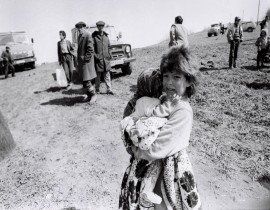Politicon.co
The problem of Islamic extremism in Central Asia
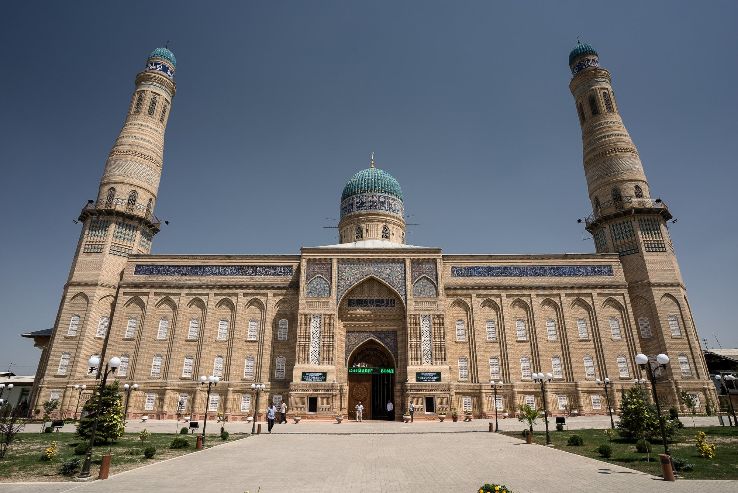
Photo: Devonaboy Jome Mosque, Andijan, Uzbekistan. Christoph Rehage
The collapse of the Soviet Union was a turning point for the new states of Central Asia. In the past, Soviet Union inculcated its secular paradigms to these religious conservative entities, but the population continued to consider themselves Muslim. The vacuum of knowledge created by the collapse of the USSR led to the spread of radical extremist ideology in the society of the new republics. The issue of the nature, proliferation, support, and organizational features of religious extremism is currently closely related to problems of security, political culture, and even the choice of a specific development model (Polakov, 2014, p.8).
Since independence, the Central Asian states have, to varying degrees, encountered and are confronting the activities of radical extremist groups whose goal is to destabilize the political situation in the country with the forceful methods of struggle. The financing and dissemination of relevant literature, the training and activities of foreign preachers – all this in complex provides the attractiveness of a radical ideology among marginalized segments of the population. Despite the great activity of Islamists in the republics, their rise to power and the creation of theocratic states in the region is unlikely. However, the example of the Andijan events demonstrates that economic problems can result in a merger of social and religious tones of protest movements.
In the early 1990s oppositional Islamic movements began to appear in Central Asia, whose purpose was to create an Islamic state based on Sharia. The propaganda of radical Islam began with the arrival of foreign missionaries from the Middle East in the cities of the Ferghana Valley and the creation of jamaats, groups of genuine Muslim believers. Later, such movements as the Islamic Revival Party of Tajikistan (IRPT), Islamic Movement of Uzbekistan (IMU) and the terrorist organization Hizb ut-Tahrir al-Islami (HTI) arose. The growth of Islamization in the region was promoted by poverty, corruption, an ideological vacuum, as well as rigidity in the positions of both the authorities and leaders of Islamic movements.
The external factor was also of great importance in the spread of extremism in Central Asia, due to the geographic proximity of the region to conflict zones in the North Caucasus and Afghanistan, where the positions of radical Islam were and remain very strong (Omelicheva, 2013). In addition, a stream of carriers of extremist ideology poured into Central Asian states from there. The events in Afghanistan greatly influenced the politicization of Islam in the region, and especially in Tajikistan. For instance, during the civil war in Tajikistan, Islamists were sheltered and supported by a number of Afghani commanders, while members of the radical opposition IMU fought on the side of the Taliban in Afghanistan and Pakistan.
Tajikistan: first victim of political Islam
In the early 1990s, Tajikistan was in the last place among all other Soviet republics in terms of socio-economic development. Economic problems in the minds of the population took on an increasingly pronounced political orientation and the discontent of the masses was transformed in a negative attitude towards the government and the administrative apparatus, and gradually gravitated toward social extremism and radicalism.
Right after the declaration of independence of Tajikistan in 1992, an armed conflict broke out between the communist government and various groups represented by the United Tajik Opposition (UTO), which promptly escalated into a civil war and lasted for five years (1992-1997). The fiercest confrontation took place in 1992-1993, when the country was factually divided into two parts. It led to a long period of instability and confrontation in the country and, according to various estimates, claimed the lives of 100,000 people. United Tajik Opposition (UTO) was a multiparty alliance and combined Islamic Revival Party (IRP), Rastokhez (Rebirth), Lali Badakhshan (Ruby of Badakshan) and Democratic Party of Tajikistan (DPT), whose goals were regional solidarity and anti-communism.
The main reasons for the confrontation were:
• High level of corruption, economic inequality, collapse of state’s coercive power, and segmentation of society characterized states weakness (Rubin, 1995);
• Inter-clan and religious confrontation over power and creation of a secular and Islamic state.
The clergy occupied an important place in the socio-political life of Central Asian states during the Soviet times. In case of Tajikistan, religion was used to resolve clan clashes. Relations between regional clans have always been a problem in Tajikistan, and even in Soviet times, the republic’s leadership used religion to resolve disputes. Along with the two main clans - Khujand (Leninobad) and Kulyab, there were several less powerful - Garm (Karatega), Hissar and Badakhshan (Pamir). Moscow controlled the situation through an unspoken quota allocation system for leadership positions. Prior to independence, it was people from the Khujand clan who led the republic, and ex-president Rakhmon Nabiev was also a representative of this clan.
Many scholars consider the outbreak of civil war in Tajikistan as a continuation of what happened in Afghanistan. There are no clear ethnic, cultural or religious borders between countries and more than 4 million Tajiks live in Afghanistan. Tajikistan is the only non-Turkic state in the entire Central Asia with Tajiks belonging to the Iranic language group, their culture and traditions differ from Turkic, and they are also more religious. The deployment of Soviet troops in Afghanistan played a significant role in the radicalization of Islamist views of Tajik society. Islamism found support among both the poorest Tajiks and influential clans, Badakhshan (Pamir) for example. The ideology of the first Tajik Islamists was close to the political views of the fundamentalist Salafists and the Muslim Brotherhood movement (Polakov, 2014, p.9).
The intensification of Islamism, along with objective reasons, was also facilitated by subjective factors associated with the activities of one of the main opposition parties in Tajikistan, the Islamic Renaissance Party of Tajikistan (IRPT), and its charismatic leader Said Abdullo Nuri. In fact, the IRPT was an alliance of unrecognized reformer mullahs, who advocated for the creation of an Islamic state in Tajikistan. The central government banned the activities of the IRPT in the country at the height of the Civil War in 1993. Armed units of the United Tajik Opposition (UTO), mainly consisting of supporters of the IRPT, settled in training camps in Afghanistan.
The lack of unity in the ranks of the IRPT on the future structure of the Islamic state reflected in the armed struggle, which had already declined by the mid-90s. After the signing of the armistice in 1997, the IRPT moved to a more moderate position and parliamentary principles of activity, and functionaries of the IRPT and UTO could no longer engage in religious activities. Therefore, many radical Islamists began to focus on the other extremist organizations, such as the Hizb at-Tahrir and the Islamic Movement of Uzbekistan (IMU) (Rudov, 2014, p.59).
The "Islamic factor" of Tajikistan has several important features. Firstly, only there Islamists were able to create strong armed groups based on the IRPT, opposing the government in a civil war for five years. Secondly, the IRPT is the only Islamic organization in whole Central Asia to have achieved legal status and representation in parliament.
Uzbekistan: rise of terrorist organizations
After gaining independence, Uzbekistan secured the secular nature of its statehood through legislation. However, the process of state building in Uzbekistan was accompanied by the revival of Islam, which resulted in creation of the various extremist groups – Islamic Movement of Uzbekistan (IMU), Islamic Jihad Union (IJU), Hizb-ut Tahrir, etc. Their main goal was simple: the destruction of secularism and the creation of an Islamic state (caliphate) under Sharia law.
The causes of Islamization in Uzbekistan were
• Social-economic problems and poverty faced by the society during Soviet “perestroika”.
• Cultural phenomenon of "religious commodities" – religious books, posters of Holy places, Islamic calendars, etc. (Khalid, 2003, p.584).
• Rise of Taliban Movement in Afghanistan and Tajik Civil War.
The Uzbek government pursued a policy of non-interference and liberalism regarding Islam, which in the early years of independence replaced the communist ideology in society (Rasanayagam, 2011, p.96). However, the growth of extremism in the country forced the Karimov regime to take measures to prevent further politicization of Islam and strengthen control over the religious and political situation. The consequence was the dissolution of the Spiritual Administration of Muslims of Central Asia and Kazakhstan (SADUM) and the creation of the Muslim Board of Uzbekistan (MBU) within the Committee on Religious Affairs (CRA) under the Cabinet of Ministers.
Since independence, Uzbekistan has faced the threat of terrorism, the peak of struggle the against which occurred in 1999-2001, when terrorist attacks in the country became more frequent (Beloglazov, 2014, p.146). The growth of Islamism also influenced the country's foreign policy agenda and resulted in intensification of Western-Uzbek cooperation. Karimov’s regime supported the deployment of U.S. and NATO forces in Afghanistan, and even provided its territory to create an American military base in Khanabad.
The Islamic Movement of Uzbekistan formed from several internal opposition Islamist groups and Uzbek Islamists who fought in Tajikistan and disagreed with the signing of a peace treaty (Balci, 2013). By the end of 1990s, it turned into a large terrorist organization in the region, which posed a threat not only to Uzbekistan, but to the entire region. Their ideology distinguishes 4 levels of jihad: political, military, economic and jihad against the wicked desires of believers. They adhere to Islamic puritanism, promise to establish public order, eradicate theft, corruption and call for social justice. The ideology of the IMU brings it closer to al-Qaida.
Initially it revealed itself with explosions in Tashkent in 1999 whose target was the country's political leadership. In the summer of 1999, the IMU units broke into the Batkent region of Kyrgyzstan and took several hostages, including foreigners. The operation was led by IMU leaders Tahir Yuldashev and Juma Namangani from Afghanistan. The main demand of the Islamists was permission to return to Uzbekistan and the resignation of Islam Karimov. Subsequently, IMU militants repeatedly staged terrorist attacks in the cities of Uzbekistan and Kyrgyzstan, including the bombings in Tashkent in 2004 (Omelicheva, 2013, p.2).
After the Batkent events, the U.S. and the entire world community recognized the IMU as a terrorist organization. The IMU received financial and military support from Taliban regime in Afghanistan and used training camps in Pakistan for training new fighters. The fall of the Taliban in 2001 dealt a serious blow to the Islamic forces in Uzbekistan, and in particular to the IMU, which subsequently split; the killing of IMU leaders Yuldashev and Namangani significantly reduced the group’s combat capabilities.
Another influential Islamic group in Uzbekistan is Hizb ut-Tahrir al-Islami (HTI) or party of Islamic Liberation, an international pan-Islamic movement, that infiltrated the Central Asian region in the 1990s. Unlike the IMU, HTI poses itself as a political party. According to Yegorov (2014), HTI is committed to anti-Western and anti-Semitic ideology and distinguishes three stages of political struggle:
1. propaganda of ideas.
2. nonviolent revolution.
3. free elections of leader (caliph).
Despite the non-violent nature of its ideology, Karimov regime considered HTI as a particularly major threat to its power. After the Tashkent bombings in 1999, the government ranked almost all oppositionists as radical extremists and started repressions against all dissidents as well as mobilized clerics from UMU to combat them (Karagiannis, 2006, p.265).
At first, HTI was one of the small Islamist groups, but its attractiveness surged after increased state pressure on Islam, which made HTI one of the largest and powerful opposition group in the country, with up to 20,000 members. It operates through a network of underground mosques in the suburban areas of the Ferghana Valley and social networks are widely used to spread ideology.
Andijan, the largest city of the Ferghana Valley, in the Soviet years was an important industrial city of Uzbekistan, where most of the working class was concentrated. Consequently, the arrest of members of local entrepreneurs along with members of the HTI in 2004 provoked mass protests in May 2005, which the Karimov regime severely suppressed with the help of military force. Karimov initially accused the IMU of organizing protests and then called the protesters members of the HTI. The negative assessment of these events and the subsequent imposition of sanctions against Uzbekistan by the European Union and the United States, lead to a change in the country's political course and the closure of the U.S. military base in Khanabad.
Conclusion
Islam in Central Asia has always been linked with local folk customs and traditions, the prominence of which is also tied to the dominance of the Hanafi madhab (school of Islamic jurisprudence) in the region (Migacheva & Bryan, 2018, p.69). After the collapse of the USSR, the socio-economic situation in the republics of Central Asia, with the exception of Kazakhstan, deteriorated sharply, which created auspicious conditions for the active inclusion of Islam in the political life of the republics, which in turn strengthened the destabilizing factor of religion.
The political and military activity of the Islamists in Tajikistan and Uzbekistan has become the starting point for destabilization of political situation throughout Central Asia. In Tajikistan, they succeeded in creation of strong-armed groups based on the IRPT, which, after five years of war, became the only Islamist party in the region to achieve legal status and representation in parliament, which however continued until 2015. At the same time, in Uzbekistan religion was used to strengthen national statehood, which the IMU and Hizb ut-Tahrir extremist organizations effectively used to wreak havoc and terror both inside the country and abroad, particularly in Osh region of Kyrgyzstan.
Kazakhstan and Turkmenistan were least affected by radical Islam. A stable economy, low unemployment and a people’s commitment to a secular lifestyle have made Kazakhstan the most stable entity in Central Asia. While in Turkmenistan during the post-Soviet years, it would be more appropriate to talk about the political factor in the development of Islam, because not so much Islam influenced political processes, but vice versa (Beloglazov, 2013, p.201).
However, in recent years, socio-economic problems have led to a surge of attractiveness of radical Islam among young people. The ISIS and the Taliban movement have increased its positions in the region. The result was terrorist attacks in Aktobe and Bishkek, as well as frequent shootings on the Turkmen-Afghan border with Taliban militants. Another major issue for Central Asian republics is the lack of democratic freedoms - secular opposition, fair elections, freedom of speech. The ruling regimes have created a situation when the opposition either acts from abroad or is imprisoned. This paves the way for strengthening the position of political Islam, and in the future, it is likely that the Islamists will be the alternative to the current regimes.
Bibliography
Balci B. (2013, December 30). The Myth of Rising Radical Islamism in Post-2014 Central Asia. Retrieved from https://carnegieendowment.org/2013/12/30/myth-of-rising-radical-islamism-in-post-2014-central-asia-pub-54050
Beloglazov A. (2013). Влияние ислама на политические процессы в Центральной Азии [The Impact of Islam on Political Processes in Central Asia]. Kazan, Russia: Kazan University / Казанский университет. УДК 327(5-015):297(075.8)
Egorov E. (2014). Исламский радикализм в Центральной Азии: Хизб ут-ТахрирутТахрир и Исламское движение Узбекистана [Islamic Radicalism in Central Asia: Hizb ut-Tahrir and the Islamic Movement of Uzbekistan]. Moscow, Russia: Central Russian Bulletin of Social Sciences / Среднерусский вестник общественных наук, 3(33). 188-193. УДК [329.3:28](575.1)
Karagiannis, E. (2006). Political Islam in Uzbekistan: Hizb Ut-Tahrir Al-Islami. Europe-Asia Studies, 58(2), 261-280. Retrieved from www.jstor.org/stable/20451186
Khalid, A. (2003). A Secular Islam: Nation, State, and Religion in Uzbekistan. International Journal of Middle East Studies, 35(4), 573-598. Retrieved from www.jstor.org/stable/3879864
Migacheva K., Bryan F., eds. (2018). Religion, Conflict, and Stability in the Former Soviet Union. Santa Monica, CA: RAND Corporation. Retrieved from https://www.rand.org/pubs/research_reports/RR2195.html. Also available in print form.
Omelicheva M. (2013). Terrorism in Central Asia: Dynamics, Dimensions, and Sources. Education About Asia, 18(3). DOI: 10.1080/09546550701424075
Polakov K. (2014). Исламский экстремизм в Центральной Азии (Islamic Extremism in Central Asia). Moscow, Russia: The Institute of Oriental Studies of the RAS / Институт востоковедения РАН.
Rasanayagam, J. (2011). Islam in Post-Soviet Uzbekistan: The Morality of Experience. Cambridge, United Kingdom: Cambridge University Press. https://doi.org/10.1017/CBO9780511719950
Rasanayagam J. (2011). Islam in Post-Soviet Uzbekistan. The Morality of Experience (pp. 97-110). New York, NY: Cambridge University Press.
Rubin, B. R. (1995). The fragmentation of Afghanistan: State formation and collapse in the international system. New Haven, CT: Yale University Press.
Rudov G. (2014). Ислам в Центральной Азии: масштабы и перспективы влияния [Islam in Central Asia: scopes and prospects of influence]. Moscow, Russia: Обозреватель / Observer. 6(293). 57–66.
Saikal A., Nourzhanov K. (2016). Afghanistan and its neighbors after the NATO withdrawal (pp. 83-97). Maryland, MD: Lexington Books.
Tunçer-Kılavuz, I. (2011). Understanding Civil War: A Comparison of Tajikistan and Uzbekistan. Europe-Asia Studies, 63(2), 263-290. Retrieved from http://www.jstor.org/stable/27975533
About the author:
Ismayil Ahmadov is currently studying at Master of International Security program of Sciences Po university. The focus of his studies and research is in the areas of intelligence and national security, foreign policy analysis and the EU public affairs. Prior to Sciences Po he graduated with honors from Baku State University. Ismayil also had an internship at the UNDP Office in Azerbaijan at the Support in Implementation of National SDG Strategy Department.
![]()
- TAGS :
- İslam
- Uzbekistan
- Tajikistan
- TOPICS :
- Domestic affairs
- History
- Religion
- REGIONS :
- Central Asia
- Russia and CIS

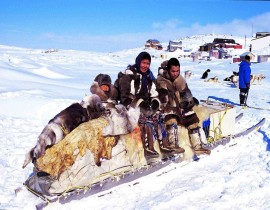
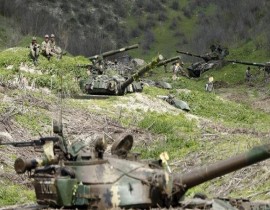
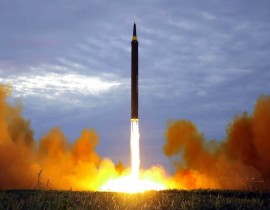
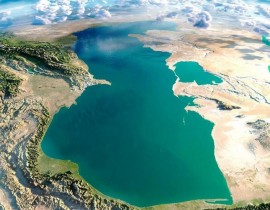
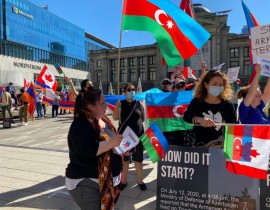
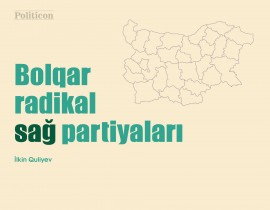
jpg-1599133320.jpg)
